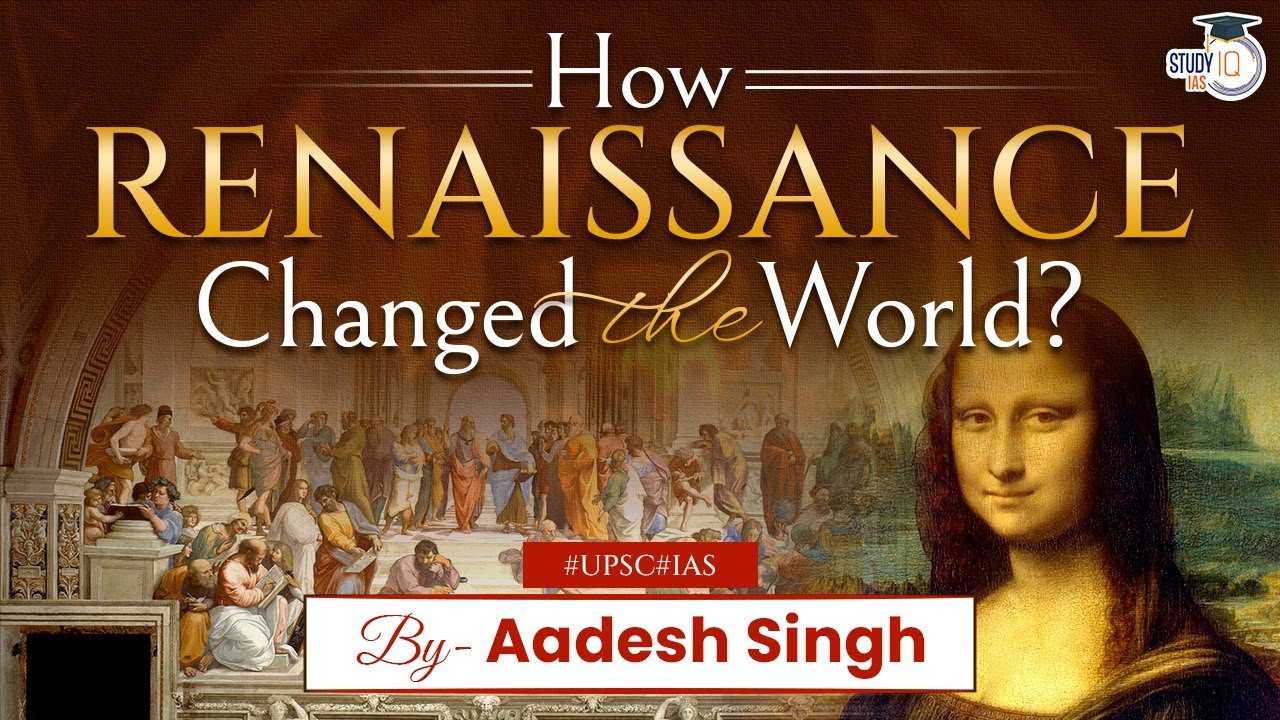O RENASCIMENTO CULTURAL
Summary
TLDRThis video script dives into the cultural rebirth known as the Renaissance, a transformative period in European history following the medieval era. It explores how the Renaissance revived ancient Greco-Roman ideas, sparked by a surge in humanism and the rediscovery of classical manuscripts. The script highlights key cultural shifts, including advancements in art, science, and literature, as well as the role of the Catholic Church and patrons in supporting these movements. It also discusses significant figures and technological innovations, like the printing press, that helped spread Renaissance ideals across Europe, reshaping society and culture for centuries to come.
Takeaways
- 😀 The cultural Renaissance was a European period focused on reviving classical concepts from antiquity after almost a millennium of the Middle Ages.
- 😀 Florence, Italy, is considered the birthplace of the Renaissance due to its cultural and intellectual dynamism, driven by trade and diverse influences from the East.
- 😀 The fall of the Roman Empire led to the rise of local powers and the Catholic Church, which preserved Roman cultural and intellectual heritage during the Middle Ages.
- 😀 The Renaissance is linked to the decline of feudalism and the rise of capitalism, with new social groups emerging and questioning their roles in a transforming society.
- 😀 Francesco Petrarca's search for original Roman manuscripts in the 14th century sparked a movement to revive classical Greek and Roman cultures, which laid the foundation for the Renaissance.
- 😀 The term 'Renaissance' was not used in the period itself, but it referred to the revival of classical cultures and the resurgence of humanism, which placed human experiences and abilities at the center of intellectual pursuits.
- 😀 Humanism was a key feature of the Renaissance, emphasizing the study of classical languages, literature, philosophy, and the humanities, with an anthropocentric worldview replacing the medieval focus on God (theocentrism).
- 😀 The invention of the printing press by Johannes Gutenberg revolutionized the spread of knowledge and ideas, allowing the works of classical authors and religious texts to be widely distributed and translated into local languages.
- 😀 Renaissance artists broke away from the medieval tradition of anonymous religious art and started signing their works, gaining fame and recognition. This marked the beginning of the 'artist as celebrity.'
- 😀 The Renaissance saw significant advancements in art, with a focus on realism, use of perspective, and human anatomy, transforming how the human body was depicted in art, often in nude form to celebrate human beauty.
Q & A
What is the Renaissance cultural period known for?
-The Renaissance was a period in European history marked by the revival of classical Greco-Roman ideas and culture after nearly a millennium of the Middle Ages.
How did the fall of the Roman Empire influence the Renaissance?
-After the fall of the Roman Empire, the loss of centralized political power allowed local lords to dominate regions independently, leading to the rise of the Catholic Church as the main political and religious force. This set the stage for the Renaissance by preserving ancient cultural and intellectual works.
How did Florence contribute to the beginning of the Renaissance?
-Florence became a cultural hub due to its strategic location, wealth, and the influx of diverse people and ideas from trade routes. The city's merchants, artists, and intellectuals laid the groundwork for the Renaissance movement.
What role did Francesco Petrarca play in the Renaissance?
-Francesco Petrarca was pivotal in the Renaissance by rediscovering and preserving ancient Roman manuscripts, especially those of Cicero. His efforts inspired others to search for and study classical texts, which helped spark the intellectual movement known as Humanism.
What is the significance of the term 'Humanism' in the Renaissance?
-Humanism is an intellectual movement that focused on the study of classical literature, philosophy, and history. It placed humans at the center of attention, valuing human achievements and reason, as opposed to the medieval emphasis on divine matters.
How did the Renaissance differ from the medieval worldview in terms of religion?
-The medieval worldview was centered around theocentrism, with God at the center of all things. In contrast, the Renaissance saw a shift towards anthropocentrism, where humans were seen as central to the universe, although this did not entail a denial of God.
What technological advancement greatly impacted the spread of Renaissance ideas?
-The invention of the printing press by Johannes Gutenberg revolutionized the distribution of knowledge, allowing books to be mass-produced and widely circulated, which helped spread Renaissance ideas more quickly across Europe.
How did Renaissance artists like Leonardo da Vinci and Michelangelo transform art?
-Renaissance artists introduced techniques like perspective and anatomical accuracy in their works, creating more realistic depictions of the human form and adding depth and emotion to their paintings and sculptures.
What is the role of patrons or 'Mecenas' in the Renaissance?
-Mecenas (patrons) were wealthy individuals or institutions, including the Catholic Church, who financed artists' works. Their support helped artists like Michelangelo and Raphael to produce iconic works and gain fame.
What was the relationship between the Renaissance and the Catholic Church?
-The Catholic Church was a major patron of the arts during the Renaissance, commissioning works like the Sistine Chapel ceiling painted by Michelangelo. However, some humanists criticized the Church, especially over issues like the translation of the Bible into vernacular languages.
Outlines

This section is available to paid users only. Please upgrade to access this part.
Upgrade NowMindmap

This section is available to paid users only. Please upgrade to access this part.
Upgrade NowKeywords

This section is available to paid users only. Please upgrade to access this part.
Upgrade NowHighlights

This section is available to paid users only. Please upgrade to access this part.
Upgrade NowTranscripts

This section is available to paid users only. Please upgrade to access this part.
Upgrade Now5.0 / 5 (0 votes)





